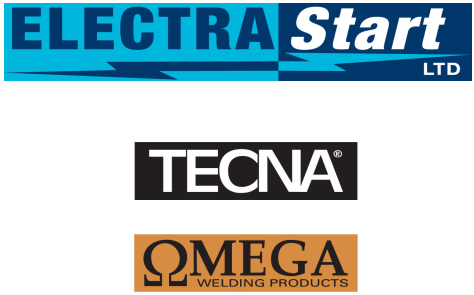Achieving Quality Control in Spot Welding —
Introducing the Electrastart ‘Weld Checker’
(Or “How to prevent ever sending out products
with weak / failed spot welds again.”)
Most spot weld monitors measure the weld current and compare it against upper and lower limits set by the operator. While this is very important, it is also important to recognise that a spot welder is essentially a constant-current device. The chosen weld current will flow through the weld site, largely irrespective of most of the weld site conditions. Measuring the weld current is important in monitoring the weld quality but is really only of value if the other factors are optimized.
The Electrastart Weldchecker is unusual in its measurement method.
The Weldchecker measures the voltage developed across the spot weld. The voltage is created by the weld current flowing through the material being welded, combined with the rest of the influencing factors. It then multiplies this voltage value with the duration time of the weld. The displayed value is in millivolt-seconds x the range setting on the Weldchecker.
What are the other factors which influence weld quality?
Squeeze Pressure: Correct pressure is critical in forming a good weld nugget.
Electrode Shape: Dimensions of contact tip define nugget size, which affects current density – a critical element in good/strong nugget formation.
Weld Time: Variations in weld time have a major impact on weld quality. Although not a problem with good spot-weld controllers.
Material Surface: Rust, oils, and plating such as galvanising have a big impact on spot welds.
Electrode Contamination: Plating material can be deposited in the electrode, degrading its performance.
Weld Voltage: Variations due to degraded connections cause a reduction of energy to drive
weld current from the spot welder through the weld site and will easily cause failed welds.
Why is voltage measurement across the weld better?
Because it can detect changes in any of the factors listed above.
Squeeze Pressure: Reduction of pressure will increase the voltage measured. An increase of pressure will decrease the voltage measured.
Electrode Shape: A decrease in electrode tip dimensions will increase the voltage measured. An increase in dimensions will decrease the voltage measured. With good quality equipment and setup, this is the main cause of alarms. It is a warning that tip maintenance/dressing is needed.
Weld Time: Reduction of weld time will reduce the displayed value.
An increase of time will increase the displayed value.
Material Surface: Any surface condition change that was not present when the Weldchecker was set up,
will typically increase the measured voltage.
Electrode Contamination: Material deposited on the electrode tip will cause an increase in the voltage measured because it adds additional resistance to current flow.
Weld Voltage: The reduction in voltage at the weld site is shown as a reduction in the displayed value. Similarly, an increase in voltage due to the other factors is immediately detected.
An additional benefit of the Weldchecker measurement method:
When carrying out maintenance of the spot welder – disassembly of arms and holders to polish clean the contact faces – once reassembled, the Weldchecker clips can be attached to each side of a joint, e.g. where the electrode holder is clamped into an arm. A trial weld is then carried out and the measurement is observed and noted. In the future this measurement can be checked against the original, to see if the connection is being degraded by oxidation and contamination. An increase in this measurement indicates that more of the total weld energy is being dissipated in this connection, rather than being available for the weld.
The Electrastart Weld Checker is not only a quality control instrument, but also a useful maintenance accessory.
How easy is the Electrastart Weldchecker to use?
Very easy – sit it on top or beside the spot welder. The attached flying lead has two clips, each clipped to one of the electrode holders, or electrodes, as close as is practicable to the weld site.
The Weldchecker itself only needs a 230V, 25VA, mains supply, and is supplied complete with a 1.5M mains lead and moulded plug.
As the supplied manual describes, there are a couple of methods for determining the upper and
lower alarm levels.
After many years of experience with the Weld Checker, I can make this statement:
With careful experimentation, it is quite practical to have alarming while still achieving good spot welds, but Indicating that electrode maintenance is now needed to prevent weakened welds in the future.
